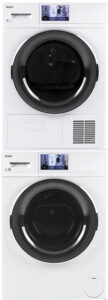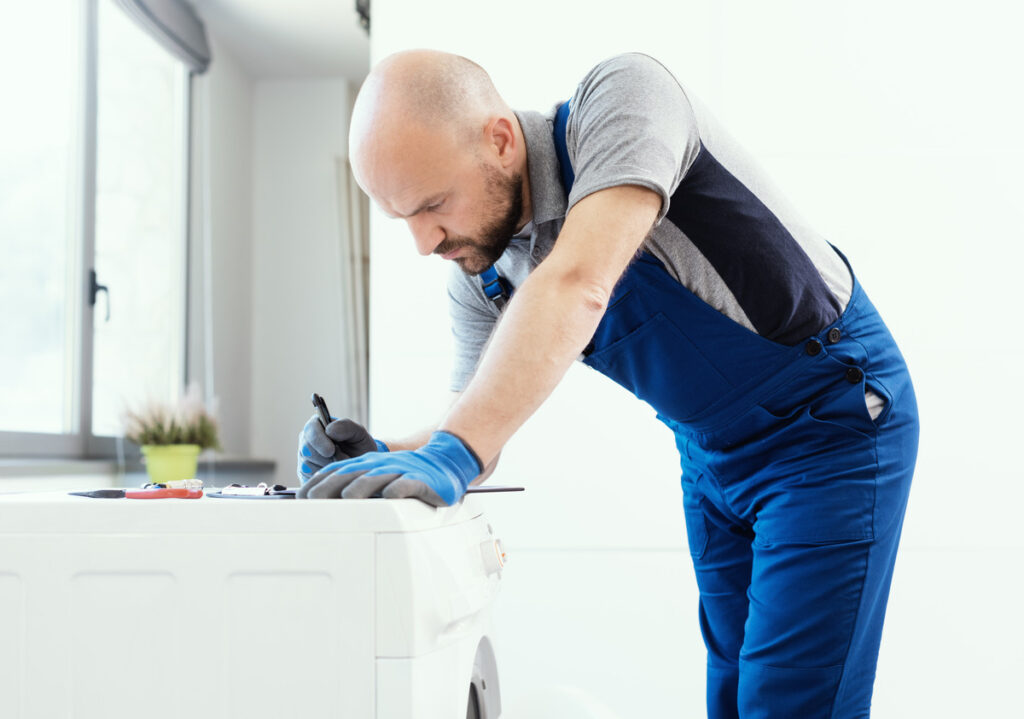Working time:
Monday to Saturday: 8:00 A.M. – 7:00 P.M.
Sunday: 9:00 A.M. - 4:00 P.M.
Working time:
Monday to Saturday: 8:00 A.M. – 7:00 P.M.
Sunday: 9:00 A.M. - 4:00 P.M.
Client Services:
Client Services:
Kenmore Stackable Washer & Dryer Repair
Kenmore stackable washer and dryer units are known for their durability and performance, offering a compact and space-saving solution for laundry needs. However, they can encounter problems such as water not draining, clothes not drying properly, or excessive noise during operation. Timely troubleshooting and maintenance can help resolve these issues and ensure the longevity of your appliance. Below, you’ll find insights into common problems, troubleshooting steps, and practical solutions to keep your Kenmore stackable washer and dryer running efficiently.

Common Problem
Kenmore stackable washer and dryer units may experience issues such as slow drainage, ineffective spinning, and prolonged drying cycles. These problems are often linked to blockages, worn-out parts, or electrical faults.
A washer that doesn’t spin or drain properly might have a clogged filter or a faulty pump. Dryers failing to heat or taking too long to dry clothes are usually caused by restricted airflow or malfunctioning heating elements. Additionally, excessive vibrations, water leaks, and noisy operation are common issues stemming from unbalanced loads, damaged seals, or worn drum bearings.
Kenmore Stackable Washer & Dryers Troubleshooting
Begin by redistributing the clothes in the drum to ensure an even load. Check the drive belt for signs of wear or slippage and replace it if necessary. Inspect the lid switch for proper functionality, as a faulty switch can interrupt the spin cycle. Additionally, test the washer motor for faults using a multimeter and replace defective components as needed.
Inspect the heating element for damage and test it for continuity using a multimeter. Clean the lint trap and vent system to eliminate blockages that restrict airflow. Examine the thermal fuse and cycling thermostat for faults, replacing them if required. A malfunctioning blower wheel or a worn motor can also contribute to poor drying performance and should be inspected.
Ensure the appliance is installed on a level surface and adjust the leveling feet as necessary. Overloading the washer or dryer can lead to imbalance and vibrations, so avoid exceeding the recommended load size. Inspect the shock absorbers and suspension springs for wear and replace any damaged components to stabilize the machine during operation.
Check the washer’s door seal for tears or damage and replace it if necessary. Inspect the inlet hoses and drain hose for leaks or loose connections. Ensure the detergent drawer isn’t clogged and is seated properly. If the issue persists, the pump or tub seal might be faulty and require replacement.
Clean the vent system and lint filter to improve airflow and prevent overheating. Test the cycling thermostat to ensure it regulates the temperature accurately. Inspect the blower housing for obstructions and verify the heating element is not shorted to the casing. Replace any defective components.
Verify that the appliance is securely plugged in and that the circuit breaker hasn’t tripped. Ensure the washer or dryer door is fully closed, as most units won’t start if the door latch isn’t engaged. Test the start switch and control board for faults and replace damaged parts as needed.
Top 6 Problems and Solutions for your Stackable Kenmore washer & dryer
Dryer Overheating
1. Clean the lint filter and vent system
2. Test the cycling thermostat
3. Inspect the blower housing for obstructions
4. Verify the heating element is not shorted
5. Replace faulty thermostats or components
Water Leaks from Washer
1. Check the door seal for tears
2. Inspect inlet and drain hoses for leaks
3. Ensure the detergent drawer is unclogged
4. Replace a faulty pump or tub seal
5. Secure loose connections
Dryer Not Heating or Drying Clothes
1. Inspect and test the heating element
2. Clean the lint trap and vent system
3. Test the thermal fuse and cycling thermostat
4. Inspect the blower wheel for damage
5. Replace worn-out parts
Washer Not Spinning Properly
1. Redistribute clothes to balance the load
2. Inspect the drive belt for wear or slippage
3. Check the lid switch for faults
4. Test the washer motor using a multimeter
5. Replace defective components
Appliance Not Starting
1. Confirm power supply and circuit breaker
2. Check the door latch for alignment
3. Test the start switch for continuity
4. Inspect the control board for damage
5. Replace defective electrical components
Excessive Vibrations During Operation
1. Level the appliance using adjustable feet
2. Avoid overloading the washer or dryer
3. Inspect shock absorbers for wear
4. Tighten loose components
5. Replace damaged suspension springs
Additional Kenmore Stackable Washer & Dryer Troubleshooting Techniques
Start by performing regular maintenance, such as cleaning the lint filter and drain pump filter. This prevents common issues like blockages and ensures optimal performance. Periodically inspecting the appliance for visible wear can help identify potential problems early.
Pay attention to the washer’s and dryer’s seals, hoses, and belts. Promptly replace any worn or damaged parts to prevent leaks and improve efficiency. Keeping these components in good condition extends the appliance’s lifespan and enhances its operation.
For persistent issues, such as noise or incomplete cycles, focus on moving parts like drum rollers and bearings. Replacing worn components and tightening loose parts will keep your Kenmore stackable washer and dryer performing effectively for years to come.

